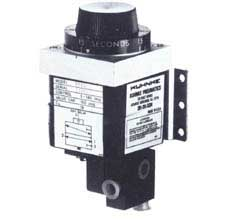Top Safety Protocols for Using Pneumatic Control Systems
Many individuals turn to pneumatic control systems because they are a safer alternative than fuel and electricity. Even though there is a lot less that can go wrong when using pneumatics, it still means you must respect your system and treat it with care. Accidents can happen, especially when people are careless, so it is essential to implement safety measures whenever using pneumatic systems.
Consider following these safety protocols:
Never, under any circumstances, should anyone ever spray another person with compressed air. The pressure of the air can cause damage to the human body, especially if the air enters the nose, ears, or eyes. When air is heated to high enough temperatures, it can cause burns on human skin.
Not only does the system release compressed air, but it also releases oil droplets and particles, which can severely damage eyes and property.
Even though explosions are very unlikely in these systems, the accident can still happen. Things get worse when the containers lose its entirety. Maintenance and repair are essential for ensuring that this tragedy never occurs.
When pipes become loose, they tend to violently shake because of the high pressure building up inside the pipes. It would help if you always inspected the entire circuit before increasing the system pressure.
Always make sure to stay clear of moving parts in the system. Do not ever attempt to move driving parts within the mechanical operation because it can cause significant damage to the hand and arm.
Pneumatic Controls
- Tips for Keeping Pneumatic Control Systems Running Optimally
Keeping up with modern advances in pneumatic valve technology is the best way to ensure that your pneumatic control system is running optimally. - Getting a Handle of Your Pneumatic Flow Controls
- Understanding the Three Types of Pneumatic Control Valves


- Ellis/Kuhnke Controls
132 Lewis Street Unit A-2, Eatontown, N.J. 07724
Phone: 1-800-221-0714
Fax: 732-291-8154
Email: Info@ekci.com
- Home Pneumatic Controls Technical Info CAD Drawings Contact Us Pneumatic Timers Blog Site Map
